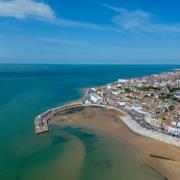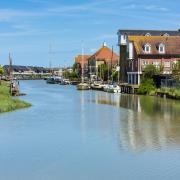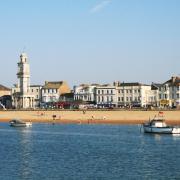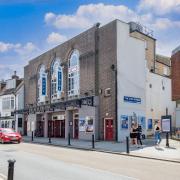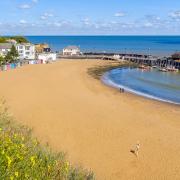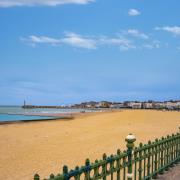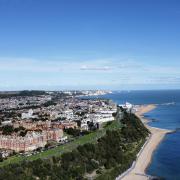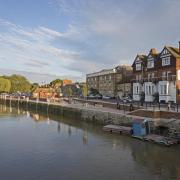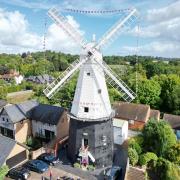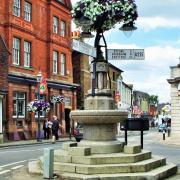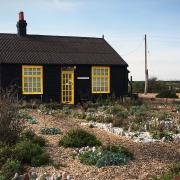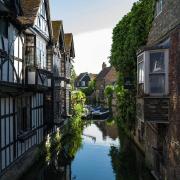Copenhagen is considered to be the coolest kid on the Nordic block and fast becoming one of the 2016 must-visit destinations.
The Danish capital is riding a wave of accolades, boasting a host of recommendations for people to visit this year. Whether it’s the delicious food, grand design, gracious locals or its fairytale appeal, there’s a never-ending of list of things to see and do.
Copenhagen’s cleanliness is admired by cities around the world, which have much to learn from its success in making sightseeing a dream for tourists. The public transport infrastructure is among the most efficient and reliable of all and is still being developed and improved to this date. Public transport will get you anywhere in the greater Copenhagen area, but if you want to take in the fresh air, be part of the local crowd and burn off some additional calories from Danish-pastry indulgence, biking is a must.
Danes take their cycling very seriously and now have entire parts of the road dedicated to safe cycling. The roads are wide, with traffic-separated bike lanes, making navigating a breeze for even the most timid cyclist. Plenty of hotels provide free bicycles for guests, so check before you hire to save you a handful of kroner.
Make your first stop in one of the city’s array of design-led stores, selling trendy lights, ingenious kitchenware, cheerful home furnishings and exquisite glass and ceramics.
Cultural outings
The Copenhagen aesthetic is defined by cool, clean lines, graceful shapes and practical accessibility that is visible in every aspect of city life. The city holds an impressive variety of galleries, public gardens, fashion houses and museums that demand perusing and exploration.
A must for fans of the applied arts and industrial design, the 18th-century Frederiks Hospital now houses the outstanding Denmark Design Museum. Its collection seamlessly transcends different eras of Danish creative expression, with an extensive collection of Danish silver and porcelain and textiles, as well as the iconic design pieces of modern innovators such as Kaare Klint, Poul Henningsen and Arne Jacobsen.
Also on display are pieces symbolic of the Danish worldly fascination, such as ancient Chinese and Japanese ceramics, and 18th and 19th-century European decorative arts.
For a crash course in Danish history and culture, do spend an afternoon at Denmark’s National Museum. This marvellous place has first claims on virtually every antiquity ever uncovered on Danish soil, including Stone Age tools, Viking weaponry, rune stones and examples of medieval jewellery.
Among the many highlights is a finely crafted 3,500-year-old sun chariot, as well as bronze ‘lurs’ (horns) that also date back more than three millennia and are still capable of blowing a tune. The museum has an excellent children’s area, as well as a classical antiquities section complete with Egyptian mummies.
Undoubtedly next on the list, the fabulous Open Air Museum Frilandsmuseet is practically unmissable and one of the oldest and biggest open-air museums in the world.
If you’re happy to travel a little out of the city, the picturesque Kronborg Castle in Elsinore, north of Copenhagen, is immortalised as the setting for Shakespeare’s Hamlet and remains one of northern Europe’s finest Renaissance castles. If al fresco strolling takes your fancy, amble around the Botanical Gardens, run by the University of Copenhagen which is simply breathtaking and even gives The Garden of England a run for its money!
Located in the city centre, the garden covers an area of 10 hectares and contains more than 13,000 species of flora and is particularly noted for an extensive complex of historical glasshouses dating from 1874.
If you’ve launched yourself around the Botanical Garden quicker than planned, both The King’s Garden and Frederiksberg Gardens, the latter resplendent with an ornate Chinese gazebo are definitely worth a visit.
Relaxing in Copenhagen’s cemeteries may seem a touch unorthodox, but they are commonly used as green ‘breathing’ spaces that are perfect for a walk if pedalling between galleries and shops leaves you needing to recharge your batteries in a tranquil setting.
The undisputed champion of Copenhagen culture is the waterside Louisiana Museum of Modern Art, a particular favourite of visitors and residents alike.
Although the spectacular museum is located 35km north of Copenhagen, on the shore of the Øresund Sound in Humlebæk, journeying there is remarkably simple and Louisiana has gained a reputation as a museum truly in touch with the zeitgeist of the contemporary art world.
The inclusive nature of Danish artistic taste is fully on display here, as visitors can choose between an impressive permanent collection of Danish and European art, an extraordinary sculpture park and one of the eight to 12 annual special exhibitions.
Make sure to check out their upcoming events section on the website (www.moma.org) for international artists, concerts and lectures that may coincide with your visit.
Get refreshed
And when you’re in need of a little refreshment, the Louisiana Café possesses one of Denmark’s most stunning panoramic views over the strait of Øresund and across to the coast of Sweden.
During the warmer months, guests can even enjoy the view on the large Calder Terrace outside the café. Travelling around the city, you are bound to build up quite an appetite and when it comes to food in Copenhagen, you are in luck: welcome to arguably the hottest culinary destination in Europe right now.
While traditions run deep, new innovation continually adds flair to the city’s ever- evolving menu, and capital’s cuisine is experiencing something of a revolution at present. Visitors must experiment in all kinds of progressive and enticing choices such as trendy new Nordic cuisine to ‘souped-up’ street fare and ‘recycled’ meals. The latter can be found at Rub and Stub on Rådhusstræde, which serves up ‘waste’ ingredients being needlessly sent to landfill before their time. Perhaps the bracing Copenhagen air perpetuates a sense of good health and there is a widespread emphasis on clean food.
At hip eatery BioMio, food is 100 per cent organic and the restaurant has been certified as Climate+, commending BioMio’s zero-carbon footprint. In the hip eatery, diners are served in the large open kitchen and order with the chef, who is happy to answer questions and take special orders. The joint’s cosy atmosphere can be found behind the iconic, red Bosch sign above the façade, but taking a cab there is advisable if you are not the best with directions.
But fear not carnivores, the meat-packing district in Vesterbro is a pit stop to fulfil any meaty craving. One of the cities most popular spots, the district used to be home to Copenhagen’s meat industry but has recently been carved into a new creative cluster with an energetic nightlife and a range of high-quality restaurants.
The crowds flock to War Pig, which pitches 22 different taps of quality beer that are guaranteed to satisfy the connoisseur and beginner alike, as well as to help wash down the establishment’s feast of American barbecue dishes.
A royal capital with almost nine centuries under its svelte belt, Copenhagen delivers world-class culture and storybook streetscapes, served on a bed of culinary flair among the glorious Nordic outdoors.
It won’t take long before you’re head-over-heels in love with the Danish capital and wishing you’d booked a longer stay. w
TOP TIPS
? A new bike-sharing scheme has just launched (the previous city bike programme collapsed in 2012). Bycyklen bikes are around £2.40 an hour for an electric bike that comes with GPS and no-puncture tyres. But if you don’t mind hitting the road on a salvaged option, Copenhagen Free Bike Rentals will set you off on a reconditioned old ride with the fee being only what you think it is worth.
? One of the beautiful city’s top attractions to suit every taste and interest is the Little Mermaid. Based at Langelinje Pier the sculpture of The Little Mermaid turned 100-years-old in August 2013 and was a gift from Danish brewer Carl Jacobsen to the city. The sculpture is made of bronze and granite and was inspired by Hans Christian Andersen’s fairy tale about a mermaid who gives up everything to be united with a young, handsome prince on land. Every morning and evening she swims to the surface from the bottom of the sea and, perched on her rock in the water, she stares longingly towards the shore hoping to catch a glimpse of her beloved prince.
? Fancy some shopping? Copenhagen’s largest shopping area is centreed around Strøget in the heart of the city. It is one of Europe’s longest pedestrian streets with a wealth of shops, from budget-friendly chains to some of the world’s most expensive brands.
? Copenhagen has been described as the gastro capital of Scandinavia. This is where you will find Nordic pioneer Noma, a Holy Grail for gastronomes across the globe and (once again) voted the world’s best restaurant in 2014, and one of 15 Michelin-starred restaurants in town; not bad for a city of 1.2 million. Using only Scandinavian-sourced produce such as musk ox and skyr curd, head chef René Redzepi and his team create extraordinary symphonies of flavour and texture. Tables are booked months ahead, so expect to join the waiting list.
? Freetown Christiania is a green and car-free neighbourhood in Copenhagen, best known for its autonomous inhabitants’ different way of life. It is a mix of home-made houses, workshops, art galleries, music venues, cheap and organic eateries, and beautiful nature. It was established in 1971 by a group of hippies who occupied some abandoned military barracks on the site and developed their own set of society rules, completely independent of the Danish government. It is still a society within a society, for an example you cannot buy a house in Christiania. You have to apply for it, and if successful, it is given to you.
Find out more




